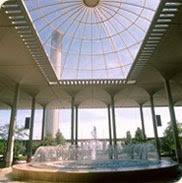Thursday, July 31, 2014
Wednesday, July 30, 2014
Protecting the men: beware the Peperas
Not only are the seasons reversed there, but in Peru, it turns out it's the men who have to keep an eye on their drinks when in bars. Attractive young ladies, known as Peperas, have been known to spike the drinks of unsuspecting men (mostly tourists) so they can strip them of their cash and other valuables.
Don't worry guys, this NYC girl has your back.

Don't worry guys, this NYC girl has your back.

Peruvian traditions
Santísima Cruz de Chalpón
First Week of August, Motupe, LambayequeThe history of the Cruz de Chalpón (Cross of Chalpón) dates back to the 1860s, from which time various miracles have been attributed to the wooden cross. The area has since become an important pilgrimage center, with the main pilgrimage taking place during the first week of August. On August 2, the faithful carry the cross down from Cerro Chalpón, eventually arriving in Motupe (about 55 miles north of Chiclayo) on August 4. On the central day (August 5), thousands of devotees gather to pay homage to the cross, after which it is carried through the principal streets until the early hours of the following day. Concerts, gastronomic fairs and a Peruvian Paso horse contest take place during the multiday festival.
Nuestra Señora de las Nieves
August 5, Central and Southern HighlandsAugust 5 is celebrated as Nuestra Señora de las Nieves (Our Lady of the Snows) throughout various parts of Italy, Spain, Portugal and Latin America. In Peru, the religious festival often features cultural exhibitions, gastronomic fairs, folk dances, processions and, in some regions, bullfights. The celebrations are particularly notable in Cusco, Ayacucho and Junín (where the day is known as Virgen de las Nieves, or Virgin of the Snows).
Peru beer list
Popular Peruvian Beer Brands
Despite some fierce brand loyalties among Peruvians, there isn’t exactly a major battle of the beers going on in Peru. Backus produces all of the most popular beers in Peru, including:- Pilsen Callao
- Cusqueña
- Cristal
- Pilsen Trujillo
- Barena
- Arequipeña
- San Juan
Traditional Beer Drinking Customs
Whether you’re sat around a table in a bar, huddled in a group near a disco dance floor or partaking in an impromptu drinking session on a street corner, you might find yourself drinking in the traditional Peruvian style.The most notable aspect of this drinking custom is the use of one glass among the gathered group, which is passed from person to person.
To explain the process, imagine Javier and Paolo are knocking back a few beers in a group of five -- with one bottle of beer and one glass:
- Javier fills the glass then passes the bottle to Paolo (sitting next to him). Paolo waits with bottle in hand while Javier drinks.
- Javier quickly drains the glass before flicking the froth from the glass onto the ground (this is standard procedure).
- Javier then passes the glass to Paolo (the bottle holder).
- Paolo takes the glass and refills it before passing the bottle to the next person. He then drains the glass, flicks out the froth and passes it to the person holding the bottle.
- The bottle is passed around -- followed by the one glass -- until the beer is finished (at which point someone will normally buy another bottle).
Helpful information about Peru
Hello all, I have found a website that actually allows you to select certain particular countries and it pulls data for comparison, this site also provides strengths and weaknesses for each country as well http://www.coface.com/Economic-Studies-and-Country-Risks/Peru . Please if anyone has found any useful info or links please post!!
Pre Departure Advice
So I got some advice from some colleagues today who have been to Peru. They say:
1) Go to Mango's restaurant. I will look the info up online and post it soon
http://www.mangosperu.com/
2) Go to the Gold Museum. Everything there is made of gold. http://www.museoroperu.com.pe/museum.html
3) Eat a chichu. It's some kind of fruit.
Also, beware of some kind of beer that is made out of spit. Thanks for that tip, really. I will be on the lookout. http://www.escapetraveler.com/chicha-perus-saliva-fermented-corn-beer-things-to-do-in-peru/
Ok, so now they say they no longer ferment it in saliva…. how trusting are you???
according to wikipedia: In some cultures, instead of germinating the maize to release the starches therein, the maize is ground, moistened in the chicha maker's mouth, and formed into small balls, which are then flattened and laid out to dry.[6] Naturally occurring ptyalin enzymes in the maker's saliva catalyses the breakdown of starch in the maize into maltose. (This process of chewing grains or other starches was used in the production of alcoholic beverages in pre-modern cultures around the world, including, for example, sake in Japan.) Chicha prepared in this manner is known as Chicha de Muko.
1) Go to Mango's restaurant. I will look the info up online and post it soon
http://www.mangosperu.com/
2) Go to the Gold Museum. Everything there is made of gold. http://www.museoroperu.com.pe/museum.html
3) Eat a chichu. It's some kind of fruit.
Also, beware of some kind of beer that is made out of spit. Thanks for that tip, really. I will be on the lookout. http://www.escapetraveler.com/chicha-perus-saliva-fermented-corn-beer-things-to-do-in-peru/
Ok, so now they say they no longer ferment it in saliva…. how trusting are you???
according to wikipedia: In some cultures, instead of germinating the maize to release the starches therein, the maize is ground, moistened in the chicha maker's mouth, and formed into small balls, which are then flattened and laid out to dry.[6] Naturally occurring ptyalin enzymes in the maker's saliva catalyses the breakdown of starch in the maize into maltose. (This process of chewing grains or other starches was used in the production of alcoholic beverages in pre-modern cultures around the world, including, for example, sake in Japan.) Chicha prepared in this manner is known as Chicha de Muko.
Subscribe to:
Posts (Atom)



